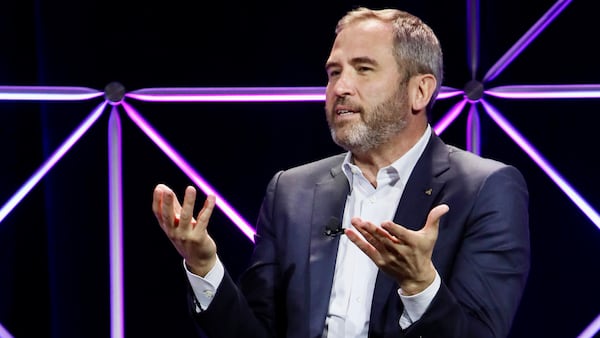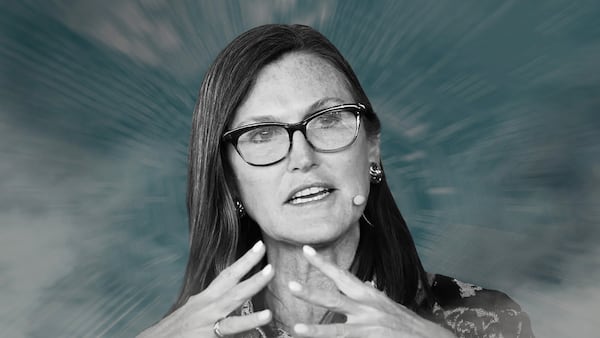- Prosecutors and SEC say onetime crypto lending mogul pumped CEL token ever since it went live in 2018.
- Alex Mashinsky’s crypto lending platform accused of turning customers into ‘unwitting investors’ in fund he controlled.
- Celsius promoted ‘financial freedom’ and ‘economic opportunity’ for crypto investors at it peak of $25 billion in assets in 2021.
In a salvo of federal criminal and civil charges, the US Department of Justice and three regulatory agencies on Thursday accused Alex Mashinsky, the co-founder and former CEO of lending platform Celsius Network, of ripping off investors from 2018 to 2022.
Mashinsky, who became one of the faces of the crypto meltdown last June, was arrested on Thursday after prosecutors unsealed a grand jury indictment charging him with seven counts of securities fraud, market manipulation, and related allegations.
Prosecutors in Manhattan also charged Roni Cohen-Pavon, Celsius’ former chief revenue officer, with similar allegations.
Financial freedom
At the same time, the US Securities and Exchange Commission accused Celsius and Mashinsky of committing fraud and selling unregistered securities in a 51-page lawsuit filed in the Southern District of New York. The Commodity Futures Trading Commission and the Federal Trade Commission filed their own civil actions, as well.
Celsius was a crypto lending platform based in Hoboken, New Jersey. It offered customers “financial freedom” and “economic opportunity” and at its peak boasted more than $25 billion in assets.
NOW READ: SEC’s probe of puny BarnBridge DAO augurs deep DeFi crackdown
The company also issued its own cryptocurrency called CEL, which sported a market capitalisation of more than $3.2 billion in June 2021. Celsius filed for bankruptcy on July 13, 2022.
Nevertheless, CEL actually rallied 6.3% on Thursday. The move might have been driven by investors taking advantage of the token’s limited liquidity, said Joshua de Vos, research lead CCData.
According to the 46-page indictment, Mashinsky promoted Celsius as a “modern day bank” where customers could safely deposit crypto assets and earn interest. In reality, Mashinsky managed the venture as a “risky investment fund” and turned customers into “unwitting investors,” prosecutors said.

Meanwhile, Mashinsky, Cohen-Pavon and other Celsius employees secretly manipulated the price of CEL to get investors to buy the token at inflated prices, the indictment said.
In its complaint, the SEC paints a picture of rampant manipulation of Celsius’ token from the moment it was sold via an initial coin offering in 2018. Celsius announced that it was fully subscribed at $50 million.
Manipulated since ICO
In fact, only around $32 million had been sold, the agency said. Mashinsky himself scooped up what was left after the ICO to conceal that it hadn’t gone as well as they had claimed, according to the SEC complaint.
In the summer of 2018, Celsius began purchasing the token on the secondary market and used it to pay interest or rewards to investors who chose to redeem their rewards.
Despite these efforts, the price kept tanking. By the end of October 2019, it had dropped to $0.05 per token — well below what it went for at the ICO. So Celsius stepped up its buying and the price increased by 2,900% to $4.37 by the end of 2021.
NOW READ: A 20-year-old Argentinian behind the $200m Euler hack says he’s now in a Paris jail
The agency cited internal messages between Mashinsky and a Celsius employee showing that the company was engaged in a secret plan in the years to come to artificially inflate CEL’s market price by buying up more of the token than they would admit to publicly.
In the message dated October 30, 2021, Mashinsky appears to complain to an employee that, while record numbers of users were joining Celsius, the price of the Celsius token was still going down.
The employee responded: “We’re not just sitting and watching the price. We’re on it all week … the issue is that people are selling and no one is buying except for us.
“The main problem was that the value was fake and was based on us spending millions (about $8 million a week and even more till February 2020) just to keep it where it is.
‘The main problem was that the value was fake and was based on us spending millions (about $8 million a week and even more till February 2020) just to keep it where it is.’
— Celsius employee cited in SEC complaint
From the start, Mashinsky was clear on how important the Celsius token would be to the network, referring to it as the “backbone” of Celsius in the white paper.
Owning the token would unlock discounts and features on the Celsius platform for users. Accordingly, the token became an index of the network’s profitability, much like a stock price — the more users Celsius attracted, the higher the price would climb, and when user demand decreased so did the price of the token.
Pump the price
Staff compensation and bonuses were linked to the price of the Celsius token, so the better it performed, the more staff benefited financially. In fact, the SEC’s lawsuit said, Celsius was the largest holder of the token, and the company controlled over half the supply of available tokens.
But Celsius told multiple lies about the token’s value to artificially pump the price, according to the SEC.
Throughout 2020 and 2021, Celsius purchased far more of the token than was needed to pay interest and far more than the additional buybacks it disclosed, the lawsuit said. It bought $700 million worth of the Celsius token but only used $160 million of that for interest payments.
NOW READ: Terra’s Daniel Shin braces for trial in South Korea as co-founder Do Kwon jailed in Balkans
None of this was disclosed. Mashinsky continued to say publicly that Celsius’s purchases of the token were determined by the amount of rewards the company owed to investors.
Mashinsky, as the largest holder of the token after Celsius itself, benefited personally from the fake price. He earned weekly interest on the token through the company’s Earn Interest Program. He was also withdrawing and selling large amounts of the token — even as he urged investors to “HODL” their own tokens.
Savings rate of 10%
The lawsuit also alleges that Mashinsky and Celsius employees made misleading statements to get investors involved in the Earn Interest Program — including misrepresenting the business model and risks to investors.
Celsius was one of the largest crypto lenders before the collapse of Terra’s stablecoin brought the crypto market crashing down in May of last year.
The lender offered retail clients interest-bearing accounts, with savings rates upward of 10% being offered. The firm would then lend out retail customers’ crypto to institutions in search of liquidity.
Celsius likened these to high-interest bank accounts. Only they weren’t insured, and regulators instead compared them to unregistered securities. Celsius cancelled client withdrawals and Mashinsky quit the company in September 2022, two months after it had gone bankrupt.
Mashinsky vowed to fix Celsius problems. “I will continue to maintain my focus on working to help the community unite behind a plan that will provide the best outcome for all creditors,” he said at the time. “Which is what I have been doing since the company filed for bankruptcy.”
US Attorney Damian Williams said Mashinsky will face a magistrate judge in federal court on Thursday.
With reporting assistance by Eric Johanssen.
Have a tip about crypto regulation? Contact the authors at joanna@dlnews.com and adam@dlnews.com.



